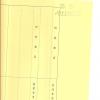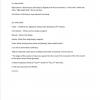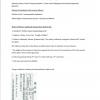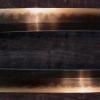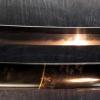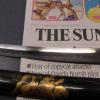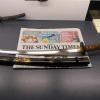Attribution
DescriptionAttributed to the Echizen Seki school by the NBTHK. Hozon papers for both koshirae and blade. Period: Edo, probably 18th century. Blade condition: In very good condition. No fatal flaws. In fact it appears to be lacking flaws. Workmanship and styleShape and constructionShinogi-zukuri, tori-zori, iori-mune. Ko-kissaki. HamonA flamboyant and highly irregular choji with irregular notare. Jitetsu and hadaDifficult to tell, but looks like itame. NakagoUbu, 4.92 inches (12.5 cm). One mekugi-ana, kiri yasurime, kiri nakago-jiri. KoshiraeThe mounts are original to this sword and have been collectively awarded Hozon origami by the NBTHK. The saya is illustrated in gold maki-e on black lacquer with a painting of pine, bamboo and Daikoku (the Japanese god of farmers, provider of food, and god of wealth). It is a spectacular example of urushi work. The only other antique saya that I have seen embellished with a painting was in an illustration of a sword in a museum collection. They are extremely uncommon. The tsuka is bound in moro-hineri hishi-maki. The habaki is made of gold. The rice ear sukashi tsuba is signed Choshu Ju Masasada. Masasada was a member of the Kawachi school living in Choshu-kuni; he died in 1800. HistoryThis is a quite from The Connoisseur's Book of Japanese Swords describing Echizen Seki school: Fukui, the centre of Echizen province, started to become prosperous after one of Nobunaga’s retainers, Shibata Katsuie, built a castle there. The end of the Sengoku-jidai saw the region, now under the Matsudaira (a branch of the Tokugawa family) become very prosperous and offer opportunities for patronage, As a result many smiths moved to Echizen from Omi, Yamashiro, Mino and other areas. As also stated on Ryujin Swords website, This sword is likely to have been made to order for an extremely wealthy merchant. Wealthy merchants were not in short supply in Edo-period Echizen, and a wealthy grain merchant might well have cause to thank Daikoku for his good fortune. Price: £8000If you have any questions about this sword please contact the seller directly by email: dahma24hampton [at] btinternet [dot] com DisclaimerThis is a free listing. Nihonto Club will not be held responsible for any loss, damage or inconvenience caused as a result of any inaccuracy or error in descriptions of items available for sale. All sales are at your own risk. Nihonto Club will not mediate between sellers and buyers. All buyers and sellers must be 18 years old or older before buying, selling, and trading items/services in Nihonto Club website. |
|||||||||||||||||||||||||||||||||||||||||||||||||||||||||||||||
 |
Nihonto ClubJapanese Sword Information Exchange |
User login |
|
|
Disclaimer: Nihontō Club owners and independent contributors will not be held responsible for any loss, damage or inconvenience caused as a result of any inaccuracy or error within this website. Except where otherwise noted, this page is licensed under a Creative Commons License.
|
